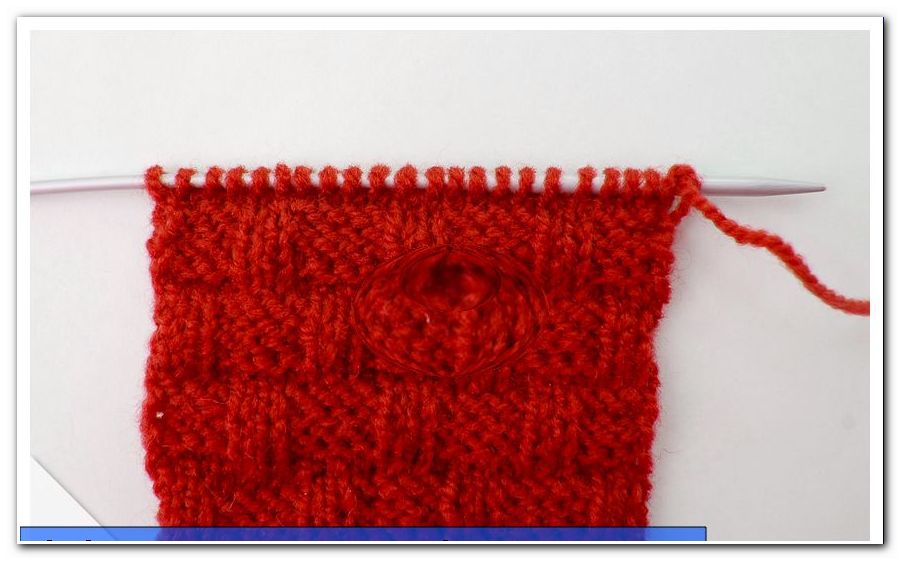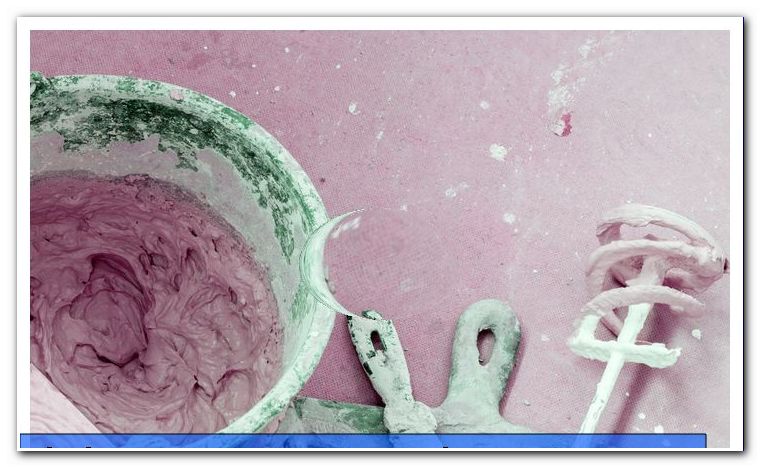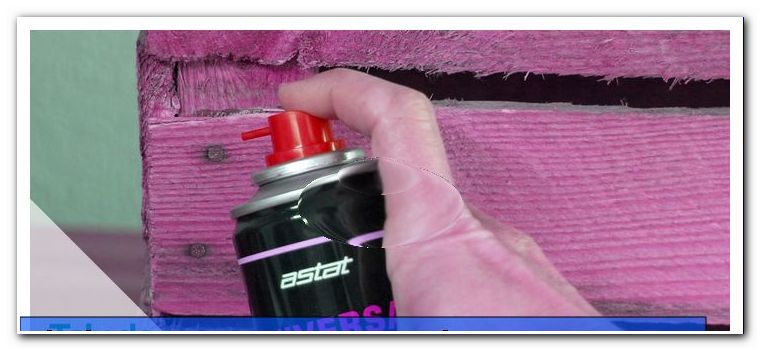Learn hand lettering: DIY instructions with templates and exercise sheets

Hand lettering is a unique art form, which is understood to mean artistic writing. The art form is inspired by calligraphy, only pencils and liquid ink are not used for this. This means that even longer texts are possible, which look nicer compared to normal handwriting. You can learn hand lettering with little effort, as long as you take your time and practice.
If you want to learn hand lettering, you not only need the right material, but also detailed instructions on how to use the lines and exercise sheets, with which you can memorize the individual letters, numbers and symbols effectively. What is particularly attractive about hand lettering is the ability to create your own lettering with sufficient practice that exactly matches your ideas.
content
- Learn hand lettering
- Material and preparation
- pencils
- paper
- Learn hand lettering | DIY instructions
Learn hand lettering
Fortunately, no digression into the history of calligraphy is necessary to learn the technique. The right exercises are sufficient for you. The artistic trend is recommended for anyone who likes to write letters, stories or diaries or who wants to decorate gifts with an attractive font.
Material and preparation
pencils
One of the most important elements in hand lettering are the right utensils . The technique is not carried out with normal pens because they are either too hard or do not use liquid ink, which does not make the desired and decorative effect possible. For this reason, beginners, advanced and "writing artists" use a whole arsenal of pens that are suitable for different line widths . What kind of pens you use for this can be recognized from the alternative designation of the technique: brush lettering .

Translated, the English word "brush" means brush. That means you use pens with a soft tip that resembles a brush and therefore gives way when writing. This is the only way to create curved lines and different color intensities, which are a characteristic element of technology. The following pens are sufficient for a start.
- Black brush pen (medium size)
- Brush pen in black (small)
- Fineliner in black

Thanks to the different sizes, you can easily carry out the different exercises, because only then you will learn the technique exactly. You should never start with a large pen because they are much more difficult to handle. The lines are unproblematic, especially for beginners, using pencils with a narrow diameter tip. When choosing the pens, pay attention to one of the following tips.
- felt
- nylon
These are best for you as a beginner because they are much more durable than professional pens or real brushes. In addition, you do not have to supply the pen with ink yourself, as this automatically picks up color and can be used via the tank in the pen. The price of the pens is as follows and varies depending on the manufacturer and version.
- medium-sized pen: around 1 euro per color
- small pen: about 2.50 euros per color
- Fineliner: 1.25 to 1.50 euros per color
When choosing a fineliners, make sure that they have a maximum tip diameter of 0.8 millimeters. The thinnest tip measures 0.05 millimeters and is therefore suitable for the finest tasks. The fineliners are so thin in comparison that you can use monolines or add decorative accents . You can choose the size here.

In the search for the right pens, some manufacturers have proven to be particularly effective, especially when it comes to products for learning hand lettering.
- edding
- Staedtler
- tombow
You are not wrong with the pens from edding, because the well-known brand for felt pens has a whole collection of brush pens, which are available in different sizes and colors. Staedtler, on the other hand, provides you with a variety of fineliners with which you can carry out even the thinnest hand lettering. Black pencils are enough to get you started, as you should learn the basics first before venturing into larger projects.
Of course, there is nothing wrong with the use of colors, only black pens have been established as particularly effective for learning. It is theoretically possible to learn hand lettering with normal felt or even colored pencils. However, this is another technique that is much more difficult to implement: wrong calligraphy.
Tip: Colors are difficult to mix with breast climbing. For this reason, you should purchase the desired shades in advance to be able to use them, or consider special pens that allow mixing directly in the pen.
paper
In addition to the pens, the chosen paper is important to learn hand lettering and to present your texts and phrases in an appealing way. You should not use typical paper for hand lettering, such as that used for notes or writing. This absorbs the paint after it has appeared so that it dries quickly and cannot blur.

If you want to learn hand lettering, this is a big mistake, because you need paper that does not absorb the ink, but dries it on the sheet. This is the only way to create the lines and courses that are desired for hand lettering. For this reason you need a paper with a closed surface. A smooth paper is ideal, while a rough one has several disadvantages.
- Color is absorbed
- Pen tips are damaged
- Pen tips fray
Rough papers should definitely not be used, otherwise you will have to get new pens within a short time. The paper used must also not be too thin. The reason ">
The following types of paper are often available in this weight class:
- printer paper
- copy paper
- stationery

As already mentioned, in addition to the weight, you should also pay attention to the surface properties of the paper. The prices for the paper vary greatly from weight to weight and manufacturer to manufacturer. The following list gives you a brief overview of the price range for different weight classes in A4 format.
- 80 grams (500 sheets): 4 to 25 euros
- 90 grams (500 sheets): 7 to 30 euros
- 100 grams (500 sheets): 10 to 35 euros
As you can see, prices increase according to weight. At the same time, the different weight classes allow different line thicknesses, which you should definitely try. This way, you can learn even better how to use the pens to learn hand lettering. Not only the pens are important for the result of brush lettering, but the paper.

This paper also has another advantage: you can use it to print out the templates and exercise sheets that you can download here. As a result, you have everything together and can start right away. This makes learning considerably easier and ensures the necessary fun with hand lettering.
Need a little inspiration for your artfully written hand lettering typefaces ">
Hand lettering: 155 sayings for every occasion
We have also put together a contribution for you on the subject of “learning calligraphy”. It contains a calligraphy DIY guide for beginners with everything you need and a lot of interesting facts.
Tip: If you suspect a damaged or frayed pen tip, look at it from the side. If the individual fibers stick out or the tip is significantly bent, you should switch to a different paper.
Learn hand lettering | DIY instructions
Once you have stocked yourself up with matching pens and paper, you can start learning hand lettering. You have to learn several different points, which relate above all to the lines and lines, as these are essential for hand lettering. The following DIY guide will teach you the basics of the art form and how to expand your skills.
Use our free exercise sheets and templates, which are prepared for you to learn how to hand letter.
Free Download Learn Handlettering Talu exercise sheets and templates
Step 1: As with learning an instrument or a language, start with the essential basics. In hand lettering, that would be the stroke of thin and thick lines.

Position a sheet in front of you and pick up the medium-sized pen. Now start to draw short, vertical lines .

These don't have to be long, but help you get a feel for the pen and ink that lands on the sheet.
Step 2: As you may notice after a few lines, the line width varies depending on the pressure applied by your hand.

More pressure creates thicker lines, while you can conjure up much thinner lines with a gentle hand movement. Basically, lines are thicker from top to bottom than from bottom to top.

This is the natural way of distributing power when using pens. Take advantage of that.

Draw lines up and down and see how different amounts of pressure are applied to the lines.

Step 3: Draw oblique, straight or completely horizontal lines in this way. This way you will understand even more how pressure and angle affect the lines. You can easily put several lines next to each other and even start to keep exact distances between them. This helps you to put the letters later.

Step 4: Now connect lines with each other. This works in the same way as classic script in school. First draw a line down and run the pen up in an arc or at an acute angle. Then repeat the same with a line from bottom to top.

As you should already see, this is the key to connecting individual letters, which is what makes hand lettering so attractive.

At the same time, you should try out circles and other geometric shapes.

Step 5: After you can connect the individual lines, it's time to start: Letters and whole words .

It is best to start here with simple words, the letters of which are repeated frequently and have simple shapes. Suitable words consist of letters such as m, n, i, e, u, o, v, w and s. You can simply string them together and connect them. Over time, you can add numbers like 9, 6, 0, or 8.

Step 6: Repeat the above steps as often as possible and expand the number of words written. The more you use hand lettering, the better your line style will be and you can easily implement different fonts and styles. Practice creates masters.

With these instructions you can already collect a large part of the necessary experience to advance with brush lettering and to design your own texts in an appealing and creative way. Be sure to take your time doing the exercises, because hasty movements quickly lead to unclean lines, which can cause frustration at the same time.

The templates and exercise sheets available here help you to internalize the lines even more effectively. Don't miss them as they are a good help.
Tip: If you want to improve your typeface even further, you should be a little familiar with the typography, which leads to a more precise and, above all, even handwriting. Straight the use of spreads and smears, as well as the numerous auxiliary lines is an effective tool with which you can create attractive texts safely.




